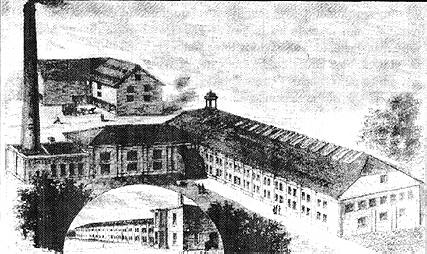At the end of the 18th century the woollen industry had all but disappeared and Coggeshall, which had grown prosperous on the back of the trade during the previous four centuries, suddenly found itself facing economic despair. During the first years of the 19th century the situation was further compounded by unemployed weavers who had joined the army returning from the war with France to become unemployed once again. Some of the old woollen clothiers had already begun to weave silk on a small-scale basis – Johnson, the last of these, was manufacturing shalloon at “Monkwell” by 1827.
In 1818 the established Coventry firm of Sawyer & Hall set up business in Coggeshall giving employment to around 150 people. Within 10 years Hall had dissolved the partnership and was running the company by himself. He established part of his business at the Abbey mill where Italian organzine was thrown (about 5 cwts each week). Two-thirds of this was sold but the remainder was taken to his factory at The Gravel where ribbons and velvet were manufactured. This factory, three storeys tall and 130 ft x 24 ft in area, stood by Robin's Brook on the south side of West Street and housed 30 rack and pinion power looms and some broad looms. Hall owned a total of about 70 broad looms, the remainder of which were kept by his workers in their cottages. He also owned cottages in Crouches and Stoneham Street that he let to his weavers for 2/- (10p) per week.
The business must have been profitable because in 1834 Hall decided to purchase land on the opposite side of the road and build a brand-new factory on the Orchard House site. It was not completed or opened for business until 1839 but was a two-storey building with the weaving looms on the upper floor, powered entirely by steam, while downstairs throwsting and winding duties would be carried out by children.
 |
An engraving from 1894 showing the premises. J. K King, the seed grower, used this on his advertising material. |